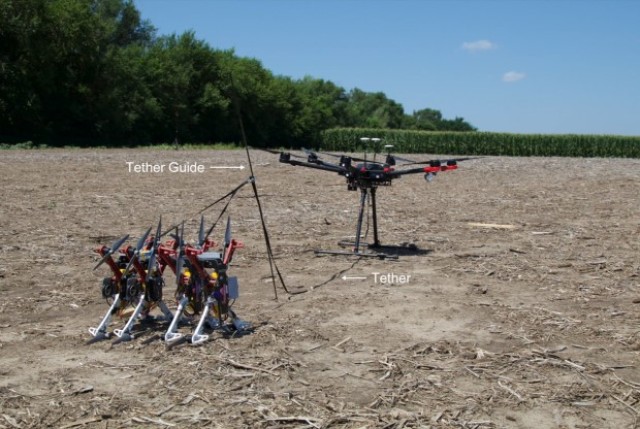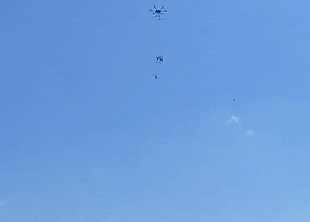American engineers have shown tests of a system that allows you to launch several quadrocopters from the air. A large drone with a mount for smaller devices takes off and transports them to the desired point, after which small drones unhook themselves without landing and stabilize themselves in the air in a few seconds. A recording of the tests is published on YouTube.
Drones cannot always be launched in the same place where they will be used. At the same time, in modern multicopters, the flight time is usually half an hour or an hour, so even a flight from the launch site to the area where the device will be used can take away a significant part of its energy. This problem can be solved directly by increasing the energy reserve in the battery, but so far progress in batteries is quite slow. There is another way — to launch drones from another aircraft.
Projects to launch small drones from large ones have been existing for several years, they are most widely used in military equipment — the United States has such projects [...] and China . Basically, this scheme is proposed to be used for reconnaissance around a large aircraft-type vehicle. This approach is rarely used among multicopters. One of the few exceptions was shown in 2019 by engineers from the NIMBUS laboratory at the University of Nebraska in Lincoln — they developed a system from an unmanned helicopter with an internal combustion engine and an electric octocopter with a device for drilling soil and installing sensors. In flight, the helicopter tows the octocopter to the right place, and then releases it on a parachute, after which it stabilizes, detaches the parachute and continues the flight independently.
In the new development, engineers from the same laboratory changed the design, got rid of the parachute and brought the number of launched drones to four.
The system consists of a hexacopter (apparently, DJI Matrice 600 Pro) and four smaller quadrocopters. The quadrocopters are attached to a metal rod, and that in turn is attached to a large drone through a cable. Before the start of the flight, the cable is threaded through a metal pin inserted into the ground near the rod. Thanks to this, when taking off, the rod with small drones rises almost exactly up, and does not drag on the ground — this can be seen in the demo video.

The location of the drones before takeoff
Image source: nimbuslab / YouTube
After takeoff, small drones can be separated from the rod and begin an independent flight, and separately, so they can either be distributed over the terrain, or released immediately in one place, if it needs to be carefully examined and removed from different angles. The developers do not disclose exactly how the drones are attached and unhooked from the rod, but they may tell technical details in future publications.
In 2015, Insitu showed a universal flying platform for aircraft-type drones — it can both launch them from the air and catch them when the flight is over.
Grigory Kopiev

